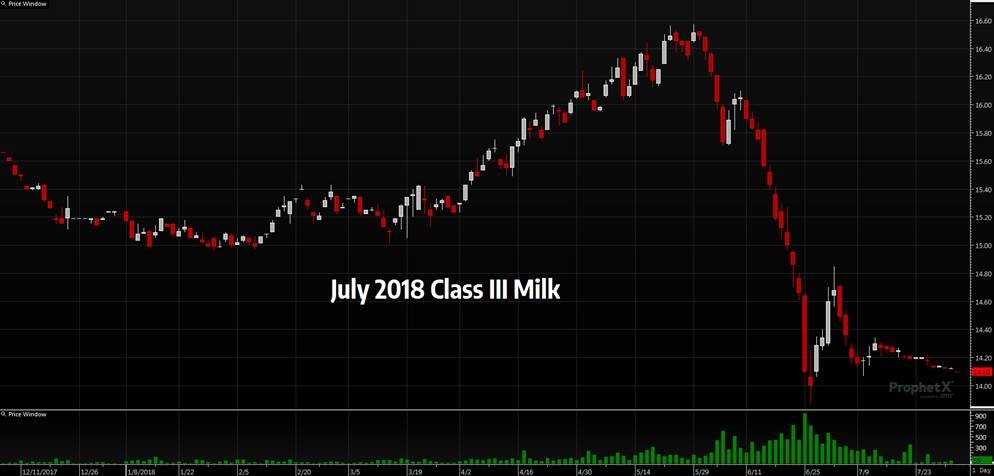The dairy markets have been pressured to the downside in recent weeks, due to fears that the spread of the coronavirus will curb demand for dairy products worldwide. Similar to what we experienced during the 2018 trade war scare, nearby class III and IV milk contracts quickly dropped roughly $2.50 from their highs after rallying for a few months. Although history may not always repeat itself, I believe it still to be relevant to break down the similarities of these two events, and what that may mean for a recovery from our current scare.
Let’s start with what we’re facing right now – a shock to the markets based on an anticipated short-term (non-structural) decline in demand. The spread of the coronavirus across China and throughout the world has caused a strong correction from recent highs for both class III and class IV milk futures at a global level. The past four Global Dairy Trade (GDT) auction events have seen the GDT Price Index fall a total of 12.03%. Steady selling pressure was seen in the powder and butter markets as Fonterra, New Zealand’s dairy co-op, noted a possible slowdown in exports to China. The thought is that, if China continues to shut down cities and businesses in order to focus on eradicating the virus, demand for commodity imports will take a hit.
Price action following the current Coronavirus scare and the 2018 milk tariff follow a similar pattern.

Source: ProphetX

Source: ProphetX
Although under different circumstances, the current pattern of a panic sell-off in the dairy market mirrors the 2018 trade war price action very closely. During that time, the United States was in trade disputes with Canada, Mexico, and China, and tariffs were being added to products left and right. Tariffs on dairy products immediately triggered an aggressive sell-off that lasted for weeks. At that time, the July 2018 class III milk contract alone fell a whopping $2.70 from its May high to its June low, as markets reacted to a temporary price shock. Throughout that stretch, there was a period of lower prices for twelve consecutive sessions. The move was aggressive and quick, just like we’re seeing this time around.
With dairy price action from these two macro events mirroring each other so closely, it is important to understand what happened after the panic sell-off in 2018 in order to use it as a guide for what we believe could happen in 2020. Bottom line – the markets recovered pretty steadily as the market returned to a “normal” demand pattern. Take the September 2018 class III contract, for example. It bottomed on July 9 at $15.06 and recovered, rallying $1.03 off its low to settle at $16.09. The contract retraced roughly 75% off of its move lower, as technicals were oversold and fundamentals improved. Watch for a similar retracement this time around; it may be a good place to add hedge protection.
This coronavirus scare could play out much differently than the 2018 trade war scare. Up to this point, the panic sell-offs are in line. Because this is an even greater macro event, we believe you’ll want to watch for rallies to add protection to hedge milk prices in 2020. Market prices are still hovering around most break-evens for producers, so there may still be opportunity there. We recommend you set a retracement target and come up with a plan to protect profits on a rally.
© 2020 Total Farm Marketing
Futures and options trading is not for everyone. The risk of loss in trading is substantial. Therefore, carefully consider whether such trading is suitable for you in light of your financial condition. Past results are not necessarily indicative of future results.

